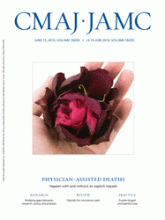Rarely do governments set aside a huge chunk of money for a scientific project and run a complex, three-year competition to select a winner, only to yank the funds off the table at the last minute, ostensibly on the grounds that there was no need for the initiative in the first place.
At the very least, it’s considered bad form to have wasted the research community’s time and effort.
Yet, such is the scientific melodrama otherwise known as the terminated $88-million vaccine manufacturing facility, once slated to be the centerpiece of the Canadian HIV Vaccine Initiative (CHVI) but since relegated to fodder for a Parliamentary hearing.
Recently the subject of three days of hearings before the House of Commons standing committee on health, the proposal continues to generate impassioned debate about whether the world is suffering from a shortage of facilities to produce trial lots of promising vaccine prototypes.
Proponents of building a facility argue that new HIV vaccines are being delayed years because of a desperate shortage of qualified facilities, while the Public Health Agency of Canada (PHAC) says the world has more than enough capacity to produce vaccines and the country has better uses for $88 million.
Testimony before the Commons committee pitted senior PHAC staff against some of the country’s top vaccine researchers.
PHAC steadfastly maintained that careful reconsideration of the global marketplace indicated that Canada did not need HIV vaccine manufacturing capability. The four consortiums that had prepared lengthy bids to host the facility were simply the victims of harsh global realities.
PHAC also indicated that its decision was primarily based on an analysis of international vaccine manufacturing capacity conducted by the Bill and Melinda Gates Foundation, which had promised to contribute $28 million toward the project.
The global bid to find an HIV vaccine, and vaccines to treat other afflictions, was dealt a serious setback by the decision to proceed with a global manufacturing facility in Canada, says vaccine expert Dr. Don Gerson. Image courtesy of © 2010 Jupiterimages Corp.
The Gates study clearly showed that there are enough smaller, contract vaccine manufacturing facilities around the world to meet the needs of HIV researchers, says Dr. Frank Plummer, director general of the PHAC’s National Microbiology Laboratory in Winnipeg, Manitoba, and a key witness before the Commons committee.
Plummer adds that there were also many misconceptions about the proposed facility, including the notion that it would be able to handle all three major methodologies for vaccine production: recombinant proteins made by bacterial or animal cells, viruses grown in animal cells and DNA made in bacterial cells. But it is “unlikely that any one facility would be able to manufacture all the different kinds of HIV vaccines,” he says.
As well, there were misconceptions that the cost of producing a vaccine would have been lower than at other contract facilities, Plummer says. Moreover, he says none of the four consortiums which pitched cases to build and run the facility could demonstrate that they had a sustainable business model for its long-term operation.
Several experts appeared to bristle at those arguments during testimony before the committee and often directly refuted Plummer’s assertions.
They included Dr. Don Gerson, an international expert in vaccine production and author of the original proposal to develop the facility.
Gerson says there is a serious shortage of facilities that combine the right technology and trained staff needed for small-lot production of vaccines for clinical trials. Too often, smaller contract facilities do not have the controls in place to handle the finicky work of producing such vaccines, but also documenting the production process, he adds.
In some cases, even if such a small facility is up to the task, there can be a commercial conflict of interest if it has already taken on work to produce a trial batch for a competing vaccine, Gerson adds.
“I think there is a lack of knowledge and understanding on the part of the decision-makers,” he says. “None has a long history of biopharmaceutical or vaccine manufacturing and thus there is no way for them to really understand the seriousness of the quality requirements.”
Gerson also says that those who contend that the facility would have been limited in its production methodologies and just as expensive as other facilities have not carefully studied the proposal.
The CHVI facility would have been able to utilize all three major vaccine-manufacturing methodologies, he adds. “If anyone says that it can’t be done (at one facility), that is just a statement that they do not know how to do it. I know how, and so do the other people involved in the proposal.”
As to cost, Gerson says the price tag for a clinical trial vaccine lot is typically $500 000–$1 million. But as a not-for-profit entity, the CHVI facility would have been able to do the same work, under better conditions, for about half that cost, he adds. And because demand for such vaccines is so high, there would have been more than enough work for the facility to be self-sustaining.
Gerson also argues that the global bid to find an HIV vaccine, and vaccines to treat other afflictions, has been dealt a serious setback. “To be successful in developing an AIDS vaccine, more clinical trials of more vaccines must be conducted. A major limitation is the availability of high quality clinical vaccine lot production. This has been a significant barrier in the past, and remains one even now.”
Footnotes
-
Published at www.cmaj.ca on May 13
First of a two-part series on Canada’s decision to terminate funding for an HIV vaccine manufacturing facility












